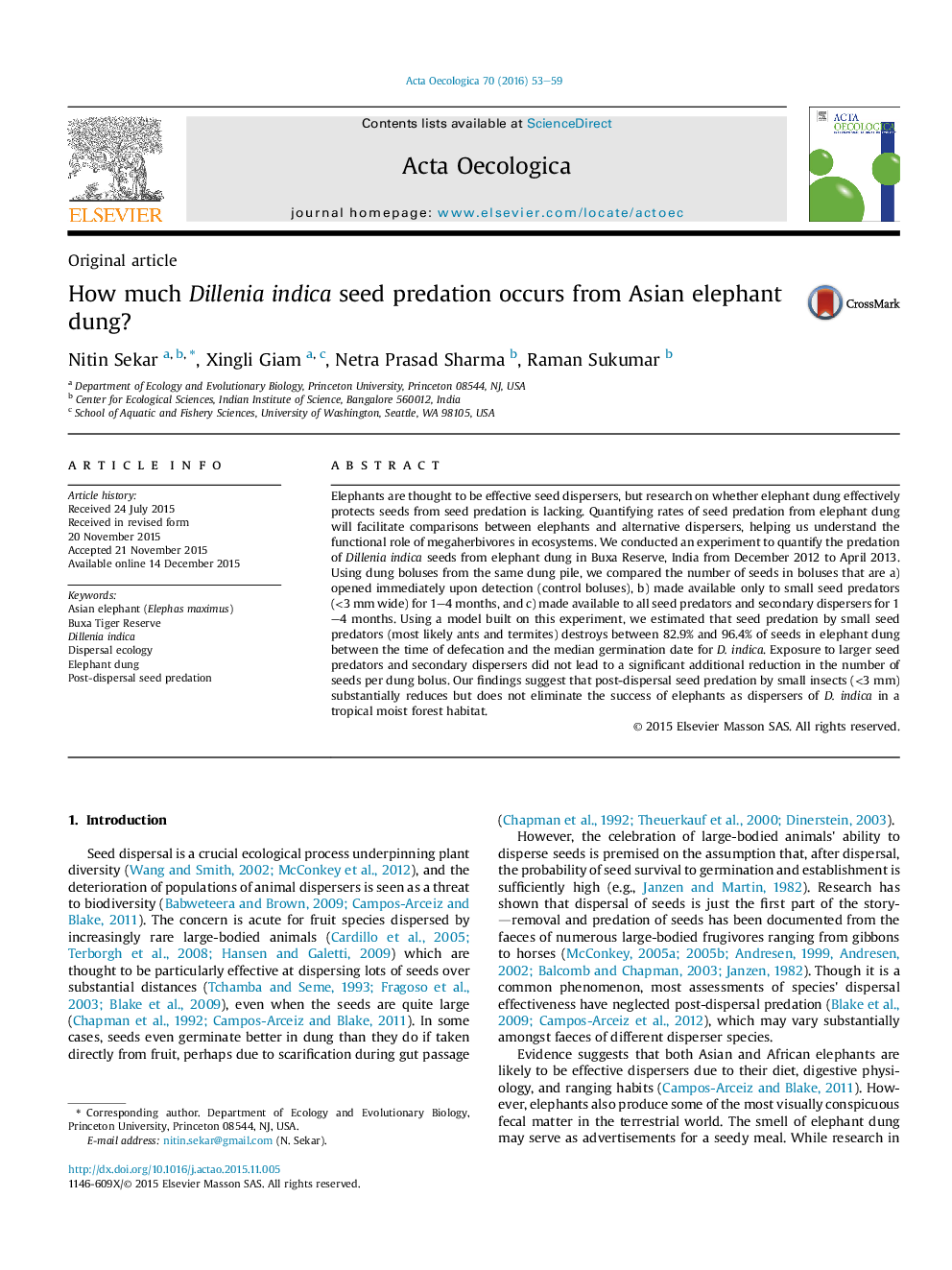| Article ID | Journal | Published Year | Pages | File Type |
|---|---|---|---|---|
| 4380800 | Acta Oecologica | 2016 | 7 Pages |
•Experiment examined how seed predation affects Dillenia indica in elephant dung.•Seed predators <3 mm wide destroyed 83–96% of D. indica seeds in elephant dung.•Seed predators >3 mm and secondary dispersers were not found to have an effect.
Elephants are thought to be effective seed dispersers, but research on whether elephant dung effectively protects seeds from seed predation is lacking. Quantifying rates of seed predation from elephant dung will facilitate comparisons between elephants and alternative dispersers, helping us understand the functional role of megaherbivores in ecosystems. We conducted an experiment to quantify the predation of Dillenia indica seeds from elephant dung in Buxa Reserve, India from December 2012 to April 2013. Using dung boluses from the same dung pile, we compared the number of seeds in boluses that are a) opened immediately upon detection (control boluses), b) made available only to small seed predators (<3 mm wide) for 1–4 months, and c) made available to all seed predators and secondary dispersers for 1–4 months. Using a model built on this experiment, we estimated that seed predation by small seed predators (most likely ants and termites) destroys between 82.9% and 96.4% of seeds in elephant dung between the time of defecation and the median germination date for D. indica. Exposure to larger seed predators and secondary dispersers did not lead to a significant additional reduction in the number of seeds per dung bolus. Our findings suggest that post-dispersal seed predation by small insects (<3 mm) substantially reduces but does not eliminate the success of elephants as dispersers of D. indica in a tropical moist forest habitat.
